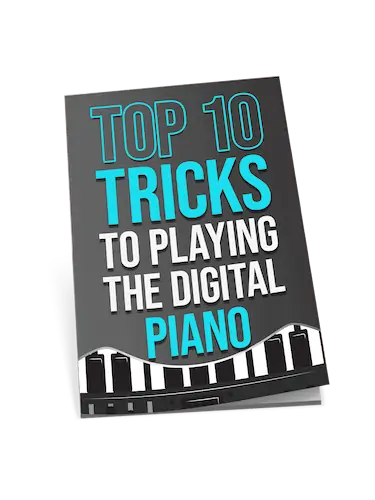Best
Beginners Digital Piano
-
Overall: Features a realistic and expressive piano sound created using Kawai's advanced Harmonic Imaging technology.
-
Best Feature: Utilizes Kawai's Responsive Hammer Compact II keyboard action
-
TedScore™: 8/10
Best
Overall
Digital
Piano
YOU LOVE
-
Overall:
GrandTouch-S keyboard with synthetic ebony and ivory keytops. -
Best Feature: All new CFX and Bösendorfer Samples.
-
TedScore™: 9/10
Best
Portable
Digital
Piano
-
Overall: Gives the sound experience of Kawai's professional grand pianos
-
Best Feature: With powerful speakers that offer a room-filling resonance
-
TedScore™: 8.6/10
Choosing between the KAWAI KDP 120 vs YAMAHA CLP 725 can be nearly impossible, yet it is undoubtedly exciting.

Let’s explore what sets these two digital pianos apart so you can confidently select the right fit for your musical journey.
The KAWAI KDP 120 showcases improved cushioning with its Responsive Hammer Compact II action, reducing noise significantly. It also features a triple sensor action for enhanced MIDI output precision.
On the other hand, the YAMAHA CLP 725 offers a unique acoustic-like experience thanks to its rich sound and Virtual Resonance Modeling. This feature is sure to impress even the most discerning critics.
Read along, and let’s explore which one deserves a spot in your home’s limelight.
Introduction to
Digital Pianos
Digital pianos have revolutionized the way we play and experience music. With their advanced technology and versatility, they offer a unique playing experience that combines the authenticity of acoustic pianos with the convenience of digital instruments.

Whether you’re a beginner or a seasoned musician, digital pianos provide an excellent way to practice, perform, and enjoy music.
In this article, we’ll explore the world of digital pianos, highlighting their features, benefits, and what to consider when choosing the right one for your needs.
Digital Piano Design and Build Quality
I’m going to tell you about the cabinet design, aesthetics, and functionality that set the Kawai KDP120 and Yamaha CLP-725 apart. In exploring furniture-style design and keyboard mechanics, you’ll get a clear picture of why each piano stands out.
Furniture-Style Piano Aesthetics
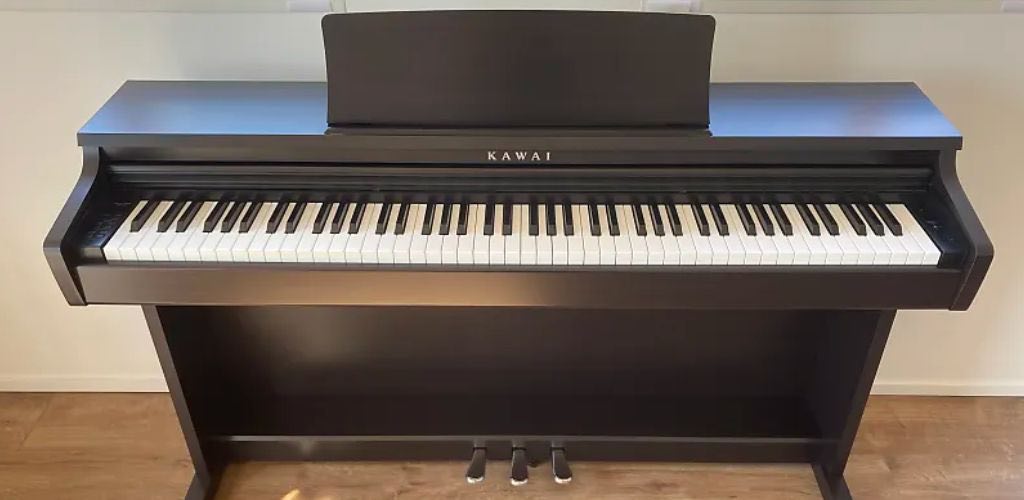
This piano offers a classic look with a large cabinet design that evokes traditional furniture styles. Its stand is designed for stability and presence in any room, and it is available in a polished ebony finish.
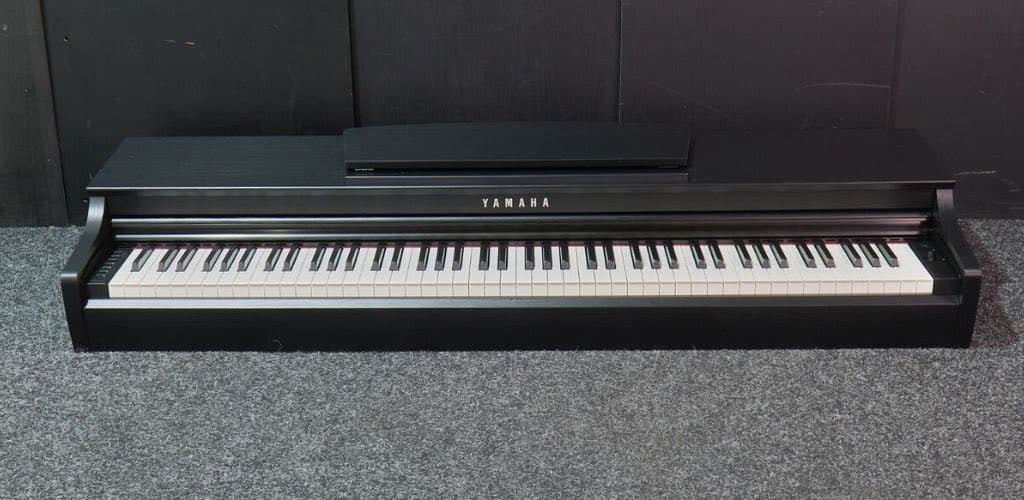
Yamaha goes for a sleek, modern aesthetic that blends the old with the new. The piano body often involves advanced materials that enhance durability without sacrificing a clean, refined look.
These contrasting styles cater to different tastes. Do you want a piano that commands attention or something that blends seamlessly into a modern setting? The choice is entirely yours.
Weighted Keys and Key Cover
The Responsive Hammer Compact II action’s weighted key design enhances the playing experience and provides a satisfying, authentic touch. The key return on this model is quieter due to added cushioning, which is great if you’re a night owl like me.
This model emphasizes precision and comfort with its graded hammer action. It’s designed to mimic the feel of an actual grand piano, making it ideal for those who want the most realistic playing experience. The key cover offers protection, ensuring that the keys remain dust-free and prolonging their lifespan.
The key differences in mechanics show how each piano’s design affects playability. Whether you’re after a more traditional touch or leaning towards modern precision, both have their unique appeals.
Kawai KDP120
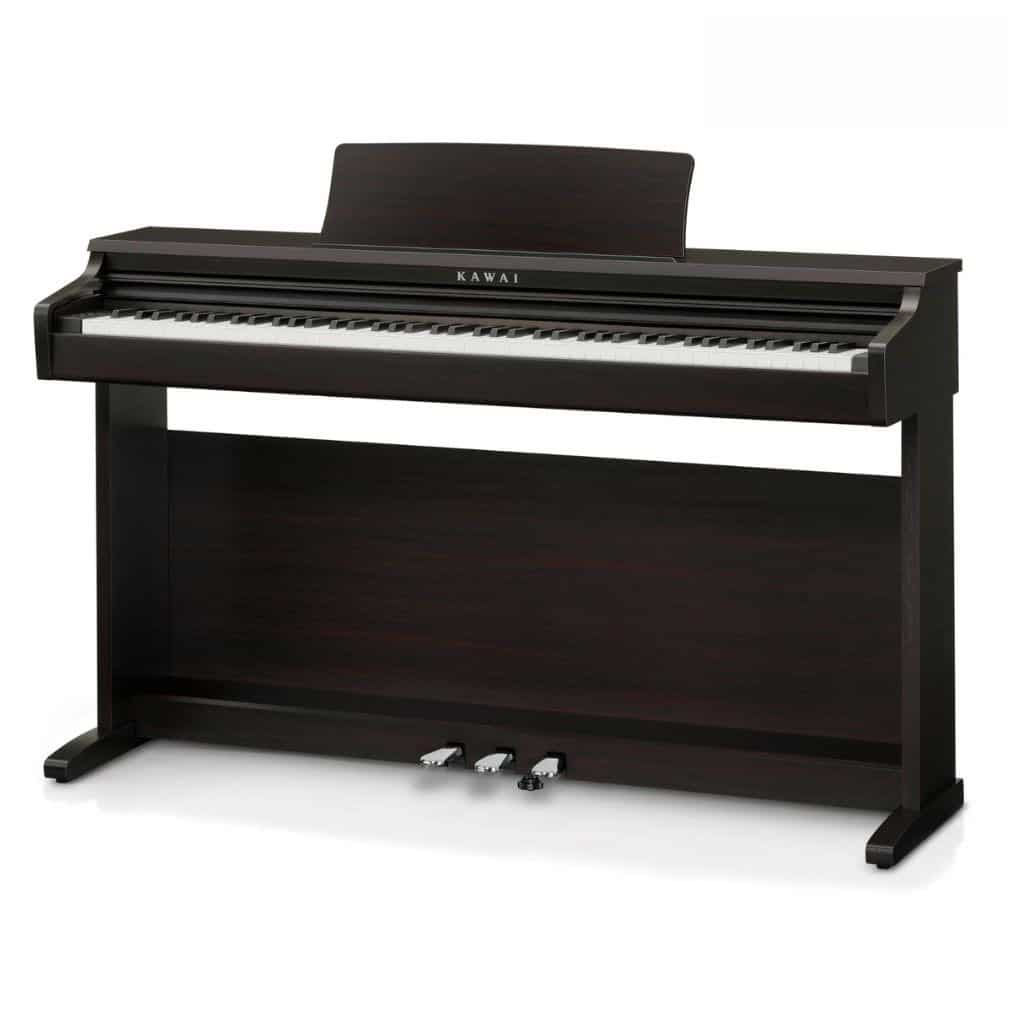
FEATURES: Responsive Hammer Compact Action
OTHER INFO: Harmonic Imaging Sound Technology
- Responsive Hammer Compact action provides a realistic touch and feel
- With Kawai's Harmonic Imaging technology, the KDP120 delivers rich and expressive tones
- Relatively heavier compared to more portable digital pianos
When you click ‘Check Price’, you’ll see there are loads of great places to buy this item. Our personal favorite is Sweetwater for the US, and Thomann and Gear4Music for the UK & Europe.
They are the largest music retailers, with excellent customer service, competitive prices, really fast shipping, and the longest guarantees.
The professional musician who wrote this article combined many things,
from the product build, manufacturer’s reputation through to feedback
from other users, to create our famous TedScore™.
Yamaha CLP 725 Digital Piano

FEATURES: GrandTouch-S keyboard with synthetic ebony and ivory keytops.
OTHER INFO: All new CFX and Bösendorfer Samples.
- Included piano bench and 50 Classical Music Masterpieces book.
- Includes a Yamaha 5-year warranty.
- Limited recording and playback capabilities.
When you click ‘Check Price’, you’ll see there are loads of great places to buy this item. Our personal favorite is Sweetwater for the US, and Thomann and Gear4Music for the UK & Europe.
They are the largest music retailers, with excellent customer service, competitive prices, really fast shipping, and the longest guarantees.
The professional musician who wrote this article combined many things,
from the product build, manufacturer’s reputation through to feedback
from other users, to create our famous TedScore™.
Key Action, Keybed and Touch Sensitivity


The Kawai KDP 120 and Yamaha CLP 725 are notable for their distinct touch and feel, each featuring graded hammer action to provide a piano-like experience. Let’s examine their keybed technologies and touch sensitivity features.
Responsive Hammer Compact II
The Kawai KDP 120 shines with its Responsive Hammer Compact II mechanism. This technology, through weighted keys, aims to replicate the touch of an acoustic piano.
Realistic Action: Weighted keys create resistance that mimics an acoustic piano, which is beneficial for expressive playing.
Triple Sensor Detection: This ensures precision by accurately capturing the nuance in key pressure, whether it’s gentle or firm. You can keep up with intricate passages confidently.
Quiet Operation: Ideal for late-night practice, this feature makes the keys quieter without sacrificing feeling, preventing late-night disturbances.
The Responsive Hammer, Compact II design, caters to pianists who value an authentic feel, minimizing the gap between digital and acoustic experiences.
Yamaha's Touch Response
Yamaha CLP 725 features a robust touch response system, focusing on dynamic control and reaction.
Graded Hammer Action: Creates varying key weights, mimicking the resistance found in acoustic grands, which is crucial for advanced techniques.
Touch Sensitivity Settings: This device offers adjustable settings that cater to different playing styles and preferences, from light to firm touch. This adaptability ensures comfort for any pianist.
Sound Quality and Production Technologies
With the Kawai KDP 120 and Yamaha CLP 725, the sound production technologies are exceptional in rendering authentic, rich piano tones. The innovative engineering behind these digital pianos focuses on replicating the nuances, quality, and sound projection of an acoustic grand.
Kawai’s Harmonic Imaging

Kawai’s Harmonic Imaging stands at the heart of the KDP 120’s sound production. This technology employs SK-EX Concert Grand samples, bringing alive the richness of a full-sized grand piano. I’m always impressed by the depth and detail of the sound. The gradation between each note offers a remarkable dynamic range.
Dynamic Expression: Each note benefits from dynamic transitions. This simulates the response of a real piano, offering both subtle and powerful tones as you vary your playing style.
Polyphony: The KDP 120 features 192-note polyphony. This ensures that even the most complex pieces with overlapping notes sound clear and vibrant. There’s an assurance that no notes will drop out during intense performances.
Considering both the engineering and experience, it feels like playing an acoustic piano.
Yamaha CFX Sampling
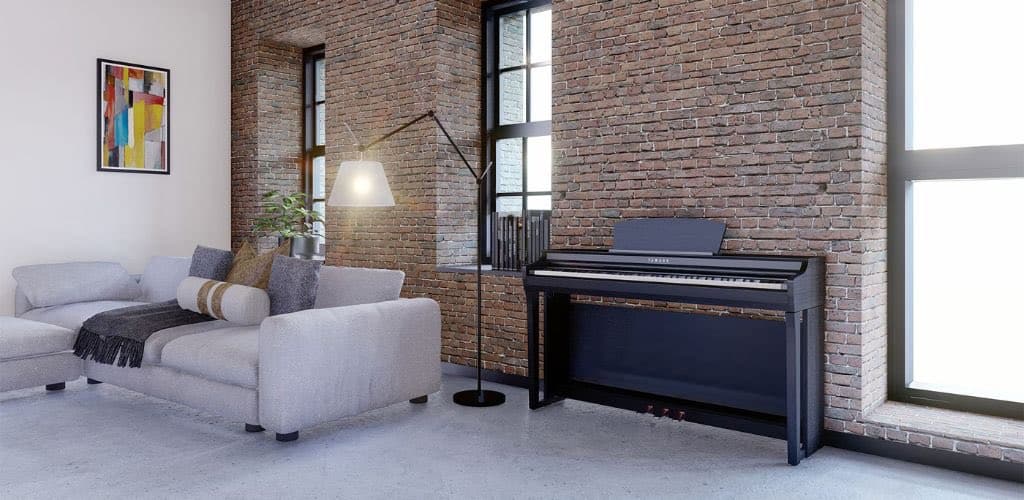
Yamaha employs its CFX Sampling technology in the CLP 725, using samples from their esteemed CFX Concert Grand Piano. This ensures the sound quality is as close to an acoustic experience as digitally possible. I find the piano sound particularly brilliant and engaging.
Authentic Tone Quality: Each note is detailed and rich due to careful sampling, producing an authentic tone quality that’s often captivating. Every play resonates with the depth expected from a concert grand.
Sound Projection: The well-designed speakers capture and project sound, providing a wide listening field. Whether you’re performing in a small room or a medium-sized venue, the sound projection reaches all corners without losing quality.
For learners and seasoned players alike, this technology delivers a satisfying musical experience.
Connectivity Options
Each piano offers unique features, from classic MIDI connections to modern Bluetooth MIDI functionalities. Integration with apps and devices further expands its potential for practice and performance enhancement.

MIDI and Bluetooth Functionality
MIDI Connections: Both the KAWAI KDP 120 and YAMAHA CLP 725 support MIDI connections, allowing them to interface with computers and other MIDI-equipped devices. I find this essential for recording and composing, as it enables seamless music data communication.
Bluetooth MIDI: The KAWAI KDP 120 has the edge here with Bluetooth MIDI capabilities, providing a wireless connection option. This feature enhances flexibility, letting me effortlessly connect to devices without the clutter of cables. Wireless freedom while practicing is a definite plus!
Integration with Apps and Devices
App Support: The KAWAI KDP 120 supports the PianoRemote App, which is a game-changer for me. It allows me to control various piano features from my smartphone, making adjustments quicker and more intuitive. This app integration is perfect for users who prefer custom setups.
Device Compatibility: The Yamaha CLP 725 offers reliable integration with multiple devices, enhancing its usability in diverse setups. Its compatibility with educational software makes it ideal for learners seeking digital versatility.
Piano Playing Experience and Dynamic Range
When choosing between the Kawai KDP120 and the Yamaha CLP-725, it’s essential to consider each model’s piano-playing experience and dynamic range. These aspects play a significant role in replicating the nuances of acoustic pianos, thereby enhancing the overall musical experience.
KDP Series vs CLP Series
The Kawai KDP120 employs the Responsive Hammer Compact II action, praised for its realistic touch. This mechanism gives the keys a weighted feel similar to an acoustic piano, offering enhanced precision in playing.
Meanwhile, the Yamaha CLP-725 uses the GrandTouch-S keyboard action. It provides a balanced touch with a responsive feel to accommodate various playing styles.
The dynamic range of a digital piano determines how well it can replicate the softness and loudness of each note. The KDP120 is known for its subtle sound variations, simulating a genuine piano performance.
The CLP-725, equipped with Virtual Resonance Modeling (VRM), effectively recreates the complex resonances found in an acoustic piano’s body. This feature allows it to capture more intricate sound layers.
Polyphony refers to the number of simultaneous notes a piano can produce. The KDP120 offers a maximum polyphony of 192 notes, while the CLP-725 boasts 256. This provides more room for complex pieces and ensures no notes are cut off prematurely.
Recreation of Acoustic Pianos' Nuance
Sound sampling plays a critical role in capturing the qualities of an acoustic piano. The KDP120 uses meticulously recorded samples, resulting in an organic and natural sound. This approach gives players a lifelike audio experience.
The comfort of playing with headphones is addressed through spatial sound technology. The CLP-725 excels with Binaural Sampling, creating realistic sound even through headphones. This is ideal for night practice without disturbing others.
Both models aim for expressive nuances closer to acoustic pianos. While the KDP120 efficiently captures soft and loud tones, the CLP-725’s advanced features allow a wider range of expression through its refined audio technology.

These digital pianos offer robust capabilities for both amateur and experienced pianists, focusing on dynamic range and nuanced sound reproduction.
Portable Digital Piano Considerations
When it comes to portable digital pianos, there are several factors to consider. One of the most important is sound quality. Look for a piano with a high-quality sound engine that can produce a rich, authentic piano sound.
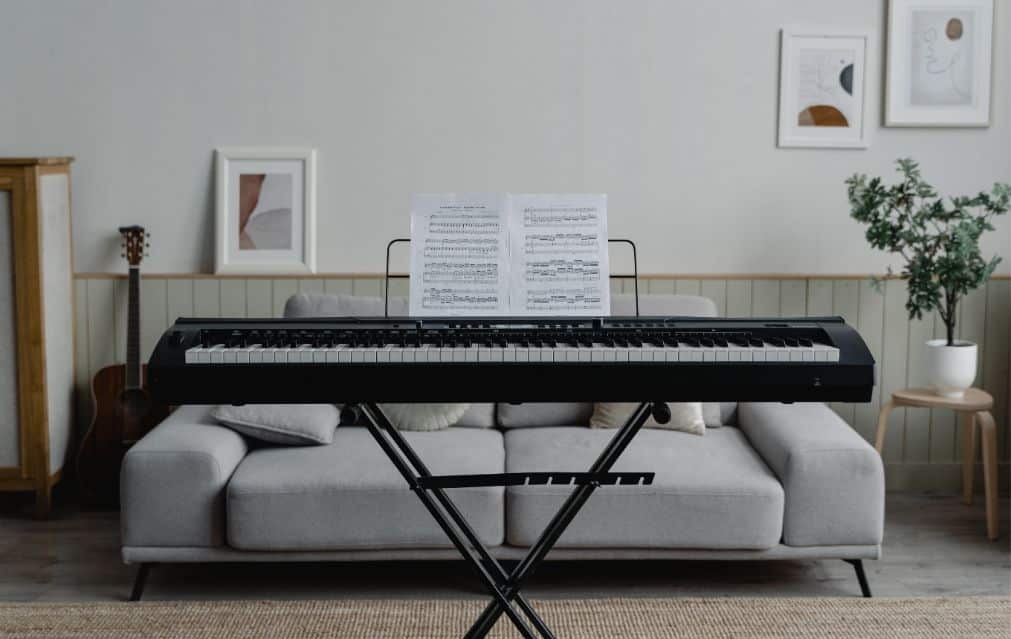
Kawai digital pianos, for example, are known for their exceptional sound quality and are often considered to be among the best in their class. Another important consideration is key action. A good portable digital piano should have a responsive and weighted key action that mimics the feel of an acoustic piano.
Some pianos, such as those with wooden keys, can provide a more authentic playing experience.
Finally, consider the price and value of the piano. While it’s tempting to opt for the cheapest option, be sure to consider the long-term value and durability of the piano.
Accessories and Customisation
When considering the KAWAI KDP 120 and YAMAHA CLP 725, it’s essential to examine the personalization options and the ease of upgrading these digital pianos.
Each model offers unique features, including various foot pedal options and compatibility that can enhance your music experience.
Optional Extras and Personalisation
Custom Stands and Benches: Both the KDP 120 and the CLP 725 come with standard stands and benches. However, you may want to upgrade for added comfort and style.
Foot Pedal Options: The KAWAI KDP series and the YAMAHA CLP models typically include basic pedal units. For an authentic playing experience akin to an acoustic piano, consider investing in a tri-pedal unit.
Headphones and Stands: Finding a great set of headphones is invaluable for those late-night practice sessions. With the right stand, these additions aren’t just functional; they declutter your space and maintain a sleek, professional look.

Upgrade Factors and Compatibility

Action and Key Upgrades: For players seeking heightened expressiveness, it’s worth checking if there are upgrade paths for the action or keys. While these are typically not user-upgradable, selecting models like the KAWAI CN201 may offer more advanced actions in the same range.
Connectivity Features: Make sure to leverage MIDI and USB connections. These connections allow these pianos to double as MIDI controllers, opening up opportunities for recording and using digital audio workstations.
Focusing on these aspects will equip you to set up and augment your digital piano to suit your style and evolving skills.
Product Support and Customer Service
When selecting a digital piano, understanding warranty terms and leveraging community resources can make all the difference. Let’s discover what both KAWAI and YAMAHA offer buyers in support services, extended care options, and community engagement.
Warranty and Aftercare
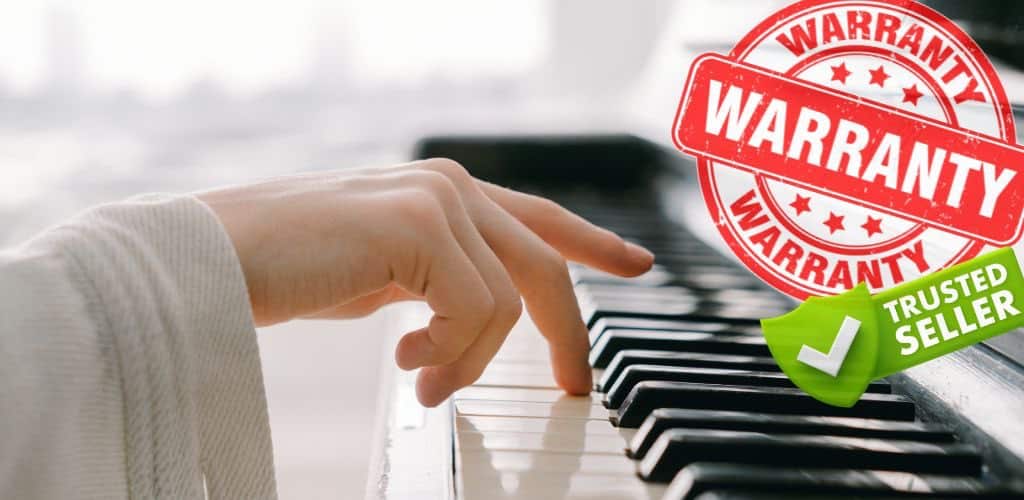
Comprehensive Coverage: Both brands are generous. Typically, they provide a multi-year warranty. This covers parts and labor for any manufacturing faults. If you’re like me and love having peace of mind, that’s a treasure.
Extended Care Options: Available for purchase, these nifty plans offer benefits like priority servicing. You never know when extra warranty time or fast repairs might save the show!
So, keeping these factors in mind is key when deciding on a piano.
Piano Forums and Community Resources

Piano World: Many users flock to forums like Piano World. They’re buzzing hubs overflowing with shared experiences, tips, and advice on setting up or troubleshooting.
Buyer’s Market Insight: Forums can act as informal marketplaces. Sometimes, you can spot good deals or glean wisdom from veteran buyers. Plus, it’s reassuring to know a seasoned player might guide me if I feel a bit lost.
By tapping into these communities, learning and troubleshooting become both easier and more engaging.
Price and Value
When it comes to digital pianos, price and value are closely linked. While it’s possible to find a good digital piano at a lower price point, be wary of extremely cheap options that may compromise on sound quality or key action.
In general, digital pianos in the same price range will offer similar features and quality.

However, there can be significant differences in terms of sound quality, key action, and overall playing experience. For example, a grand piano sound may be more expensive to produce than a standard piano sound, but it can provide a more authentic and immersive playing experience.
Ultimately, the price difference between digital pianos will depend on a variety of factors, including the brand, model, and features. Be sure to do your research and compare different options before making a decision.
Additional Recommendation
Kawai ES920 Digital Piano

PERFECT FOR: piano players of all levels
FEATURES: Provides the professional grand piano sound experience
OTHER INFO: Boasts powerful speakers that fill the room with resonance
Kawai ES920 Digital Piano
- Delivers a natural and authentic feel with weighted action
- Includes a European warranty that lasts for 5 years
- Perfect for any and every occasion
- Not portable due to its weight of 34kg
- Offers a restricted selection of available sounds
When you click ‘Check Price’, you’ll see there are loads of great places to buy this item. Our personal favorite is Sweetwater for the US, and Thomann and Gear4Music for the UK & Europe.
They are the largest music retailers, with excellent customer service, competitive prices, really fast shipping, and the longest guarantees.
The professional musician who wrote this article combined many things,
from the product build, manufacturer’s reputation through to feedback
from other users, to create our famous TedScore™.
Yamaha CLP-745
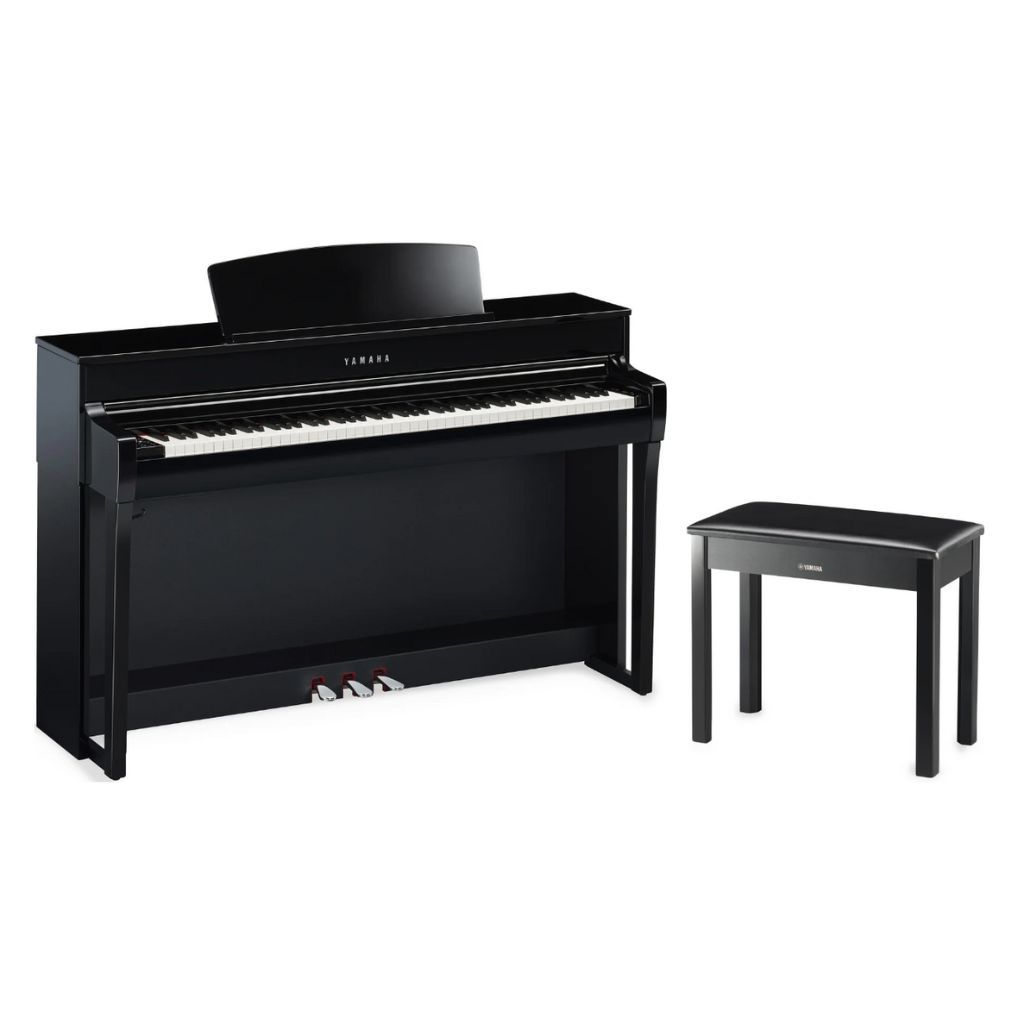
FEATURES: Has GrandTouch-S keyboard with wooden keys and synthetic ebony and ivory keytops
OTHER INFO: Incorporates Virtual Resonance Modeling technology
- Offers a wide range of features, including multiple piano voices, a variety of built-in songs, USB audio recording and playback, and compatibility with apps like Smart Pianist
- With Virtual Resonance Modeling (VRM) technology and high-quality piano samples
- Premium price tag
When you click ‘Check Price’, you’ll see there are loads of great places to buy this item. Our personal favorite is Sweetwater for the US, and Thomann and Gear4Music for the UK & Europe.
They are the largest music retailers, with excellent customer service, competitive prices, really fast shipping, and the longest guarantees.
The professional musician who wrote this article combined many things,
from the product build, manufacturer’s reputation through to feedback
from other users, to create our famous TedScore™.
The End Result:
Kawai KDP 120 vs Yamaha CLP 725
When comparing the Yamaha CLP-725 and Kawai digital pianos, both brands offer exceptional piano sounds and high-quality digital instruments.
The Yamaha CLP-725 utilizes the company’s advanced sound engine, which faithfully reproduces the rich tones of a baby grand piano, while Kawai digital pianos are known for their realistic wooden keys and responsive touch.
Although both brands excel in the realm of home digital pianos, Kawai also offers a range of stage pianos designed for live performances.
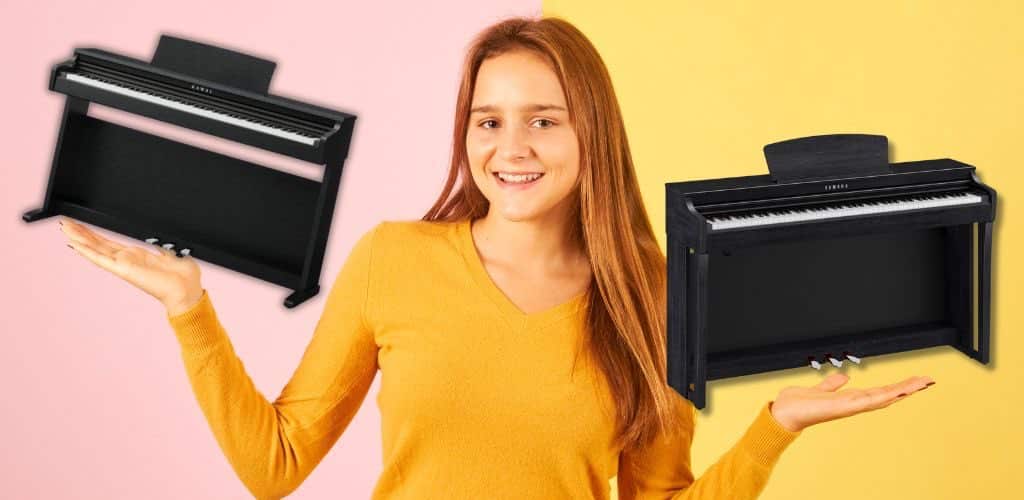
Sound Quality: The Kawai KDP 120 prides itself on rich sound output, thanks to its Harmonic Imaging technology. In contrast, the Yamaha CLP-725 uses the CFX and Bösendorfer Imperial piano sound samples, offering a broader sound palette.
Keyboard Action: The Kawai KDP 120 features a Responsive Hammer Compact II action, which provides a realistic feel. However, those who enjoy a heavier touch might lean towards the Yamaha CLP-725’s GH3X keyboard.
Budget: The Kawai KDP 120 is the more budget-friendly option, providing excellent value for its cost. The Yamaha CLP-725 might be more expensive, reflecting its advanced features.
Aesthetic and Build: Both models sport elegant designs that suit any home decor. The Kawai might appeal to those who favor simplicity, while the Yamaha’s design might attract those who appreciate sophistication.
Ultimately, the choice between the Yamaha CLP-725 and a Kawai digital piano will depend on personal preferences regarding sound, feel, and intended use.
Each of these digital pianos has distinctive features to consider, depending on what you prioritize in your purchase. Regardless of your choice, both brands deliver quality and reliability.
Hold up, we’re not finished yet…
For a comprehensive comparison of Kawai and Yamaha digital pianos, I recommend reading “Kawai Digital Piano vs Yamaha” to understand the key differences in sound quality, touch sensitivity, features, and overall value between these two popular brands.
FAQ's
The Yamaha CLP-725 is a high-quality digital piano with excellent sound, touch, and features, making it a great choice for beginners and experienced players alike.
The Kawai KDP120 has a maximum polyphony of 192 notes and features Harmonic Imaging sound technology, which delivers a rich and dynamic piano sound. It also includes built-in lesson functions, Bluetooth connectivity, and a variety of instrumental voices and accompaniment styles.
The best brand of digital piano depends on personal preferences, budget, and intended use, but some of the most highly regarded brands include Yamaha, Kawai, Roland, and Casio. These brands offer a wide range of models with excellent sound quality, realistic key action, and advanced features, making them popular choices among pianists of all levels.
CLP stands for “Clavinova Line Piano” in the Yamaha Clavinova series of digital pianos. The CLP series is known for its high-quality sound, realistic key action, and advanced features that closely mimic the experience of playing an acoustic piano.










